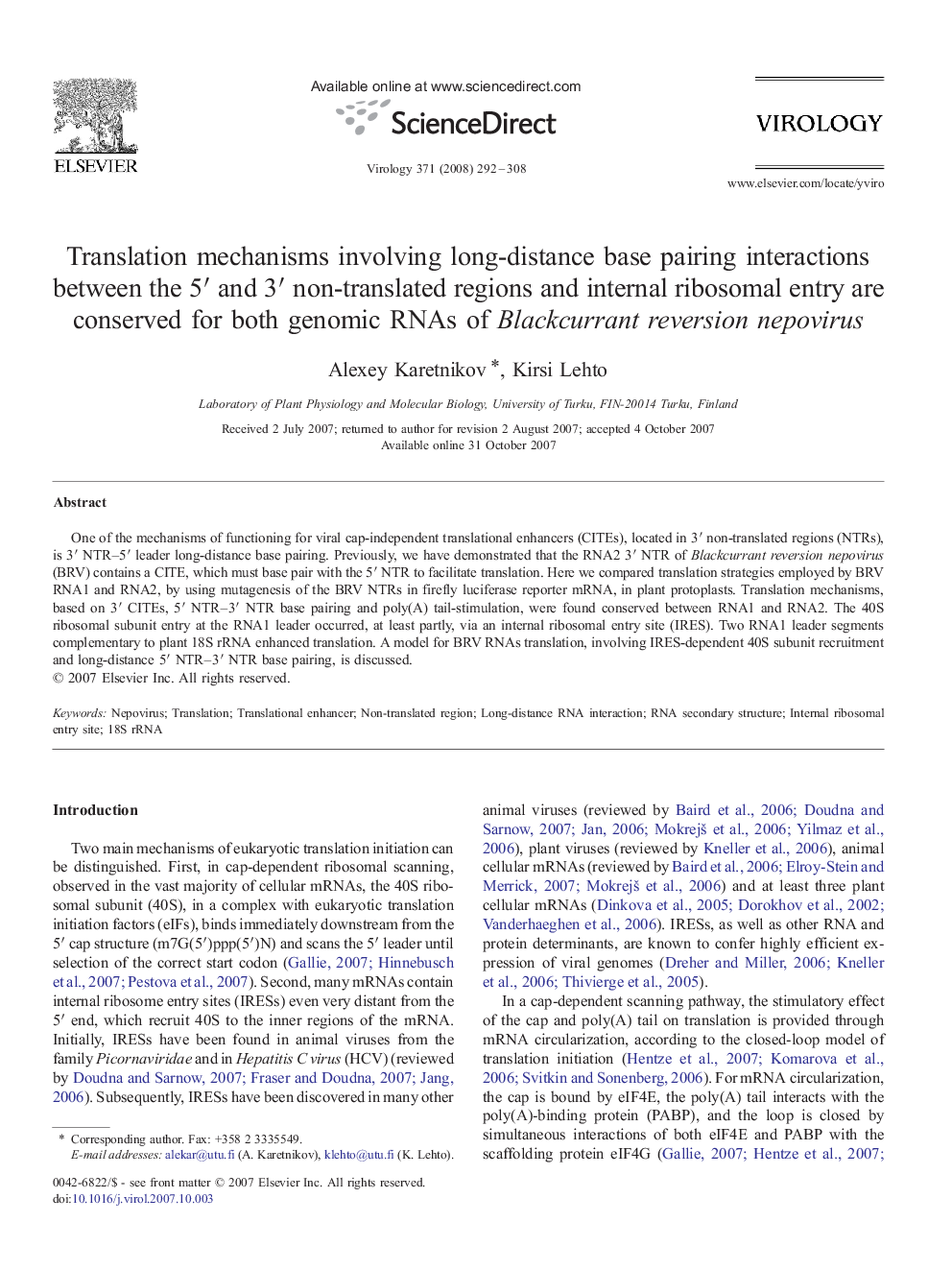| کد مقاله | کد نشریه | سال انتشار | مقاله انگلیسی | نسخه تمام متن |
|---|---|---|---|---|
| 3426328 | 1227326 | 2008 | 17 صفحه PDF | دانلود رایگان |

One of the mechanisms of functioning for viral cap-independent translational enhancers (CITEs), located in 3′ non-translated regions (NTRs), is 3′ NTR–5′ leader long-distance base pairing. Previously, we have demonstrated that the RNA2 3′ NTR of Blackcurrant reversion nepovirus (BRV) contains a CITE, which must base pair with the 5′ NTR to facilitate translation. Here we compared translation strategies employed by BRV RNA1 and RNA2, by using mutagenesis of the BRV NTRs in firefly luciferase reporter mRNA, in plant protoplasts. Translation mechanisms, based on 3′ CITEs, 5′ NTR–3′ NTR base pairing and poly(A) tail-stimulation, were found conserved between RNA1 and RNA2. The 40S ribosomal subunit entry at the RNA1 leader occurred, at least partly, via an internal ribosomal entry site (IRES). Two RNA1 leader segments complementary to plant 18S rRNA enhanced translation. A model for BRV RNAs translation, involving IRES-dependent 40S subunit recruitment and long-distance 5′ NTR–3′ NTR base pairing, is discussed.
Journal: Virology - Volume 371, Issue 2, 20 February 2008, Pages 292–308